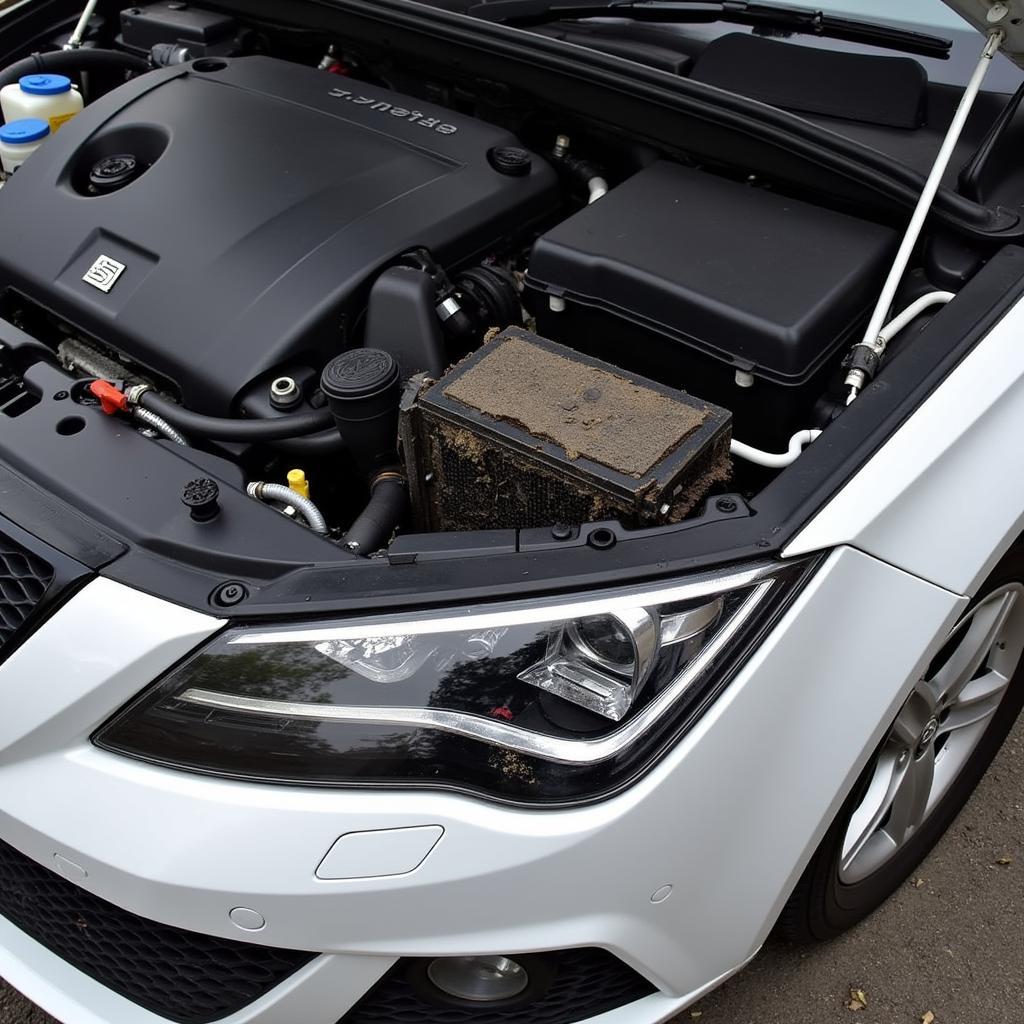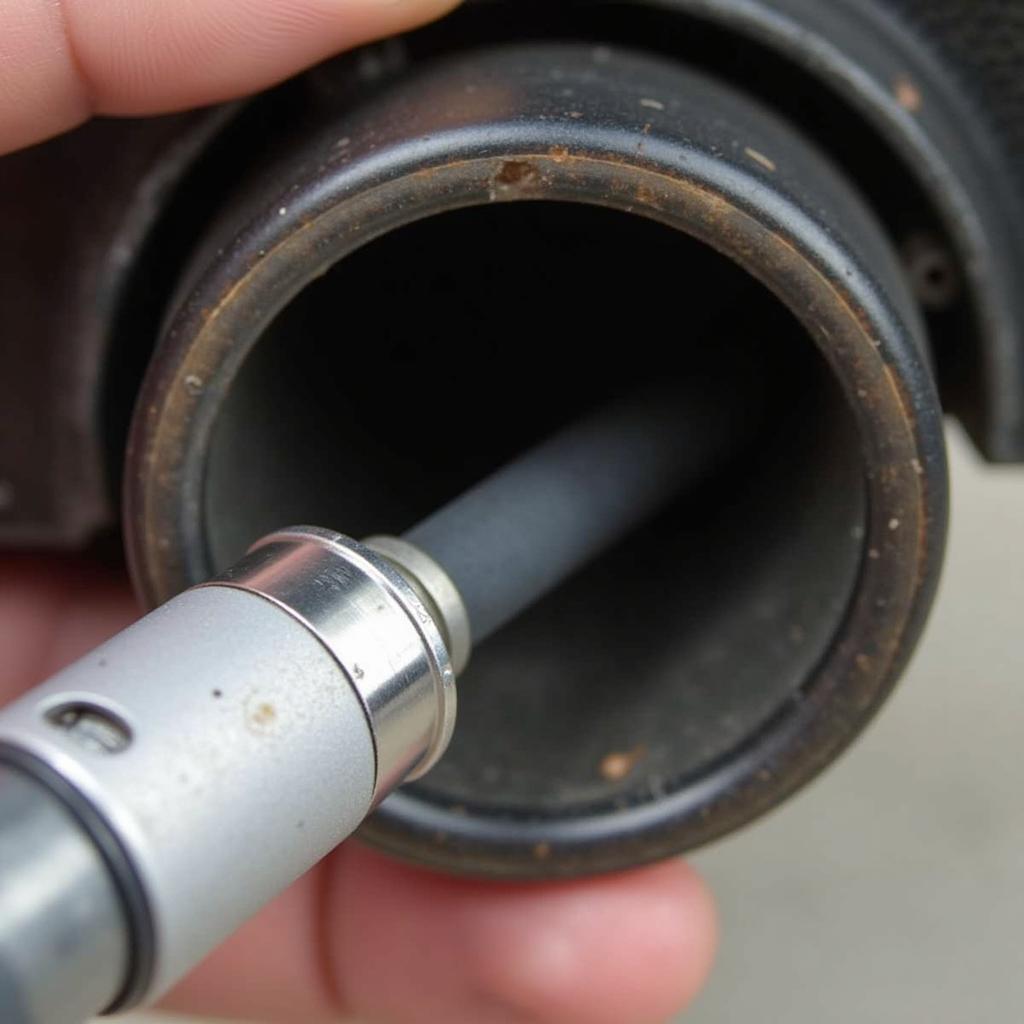The dreaded temperature warning light on your Seat Leon dashboard can be a cause for concern. This light, often displayed as a red thermometer icon, signals a potential issue with your car’s cooling system. Ignoring it could lead to overheating and expensive engine damage. This comprehensive guide will help you understand the common causes of a Seat Leon temperature warning light and how to address them.
Understanding Your Car’s Cooling System
Before delving into specific issues, it’s crucial to understand the basics of your Seat Leon’s cooling system. The system is designed to maintain an optimal engine operating temperature, preventing overheating that can cause severe damage. Key components include:
- Radiator: Responsible for dissipating heat from the coolant.
- Water Pump: Circulates coolant throughout the engine and radiator.
- Thermostat: Regulates the flow of coolant to maintain optimal temperature.
- Coolant: A mixture of water and antifreeze that absorbs and transfers heat away from the engine.
- Cooling Fan: Helps draw air through the radiator to cool the coolant.
- Sensors: Monitor coolant temperature and send signals to the car’s computer.
Common Causes of Seat Leon Temperature Warning Light
Several factors can trigger the temperature warning light in your Seat Leon. Here are some of the most prevalent:
1. Low Coolant Level
One of the most common culprits is a low coolant level. This can occur due to leaks in the cooling system, evaporation over time, or simply neglecting to top up the coolant.
 Seat Leon Coolant Reservoir
Seat Leon Coolant Reservoir
What to do: If you suspect low coolant, allow the engine to cool completely and then carefully check the coolant level in the reservoir. If it’s low, top it up with the correct coolant type specified in your car’s manual. If you notice frequent coolant loss, it’s crucial to have the system inspected for leaks.
2. Faulty Thermostat
The thermostat plays a vital role in regulating coolant flow. If it gets stuck in a closed position, it can restrict coolant circulation, leading to overheating. Conversely, a thermostat stuck open can prevent the engine from reaching optimal temperature.
What to do: Diagnosing a faulty thermostat often requires professional help. A mechanic can test the thermostat’s operation and replace it if necessary.
3. Radiator Problems
A clogged radiator or a leak in the radiator can also trigger the temperature warning light. Over time, sediment and debris can accumulate in the radiator, restricting coolant flow and reducing cooling efficiency.
 Seat Leon Radiator with Debris
Seat Leon Radiator with Debris
What to do: If you suspect a radiator issue, it’s best to take your Seat Leon to a qualified mechanic. They can assess the radiator’s condition, flush it if needed, or recommend a replacement.
4. Malfunctioning Water Pump
The water pump ensures coolant circulation throughout the system. If the pump fails or becomes inefficient, coolant flow is disrupted, causing the engine to overheat.
What to do: A failing water pump usually requires replacement. It’s recommended to consult a mechanic for diagnosis and repair.
5. Cooling Fan Issues
The cooling fan plays a crucial role in drawing air through the radiator, especially during slow speeds or idling. A faulty fan motor, a blown fuse, or a problem with the fan control module can all lead to insufficient cooling.
What to do: A mechanic can diagnose the cooling fan system, identify the root cause of the issue, and perform the necessary repairs.
6. Faulty Temperature Sensor
While less common, a faulty coolant temperature sensor can send inaccurate readings to the car’s computer, triggering the warning light even if the coolant temperature is normal.
What to do: Diagnosing a faulty temperature sensor requires a diagnostic scanner. A mechanic can read the sensor data and replace the sensor if necessary.
What to Do When the Temperature Warning Light Comes On
If the temperature warning light illuminates while driving, it’s crucial to take immediate action:
- Pull over safely. Find a safe location to stop your car as soon as possible.
- Turn off the engine. Continuing to drive with an overheating engine can cause severe damage.
- Do not open the hood immediately. Allow the engine to cool down for at least 30 minutes before attempting to open the hood. Hot coolant can cause serious burns.
- Check the coolant level (once cooled). If the level is low, top it up with the correct coolant type.
- Call for roadside assistance. If you suspect a more serious issue or are uncomfortable checking the coolant yourself, it’s best to call for professional assistance.
Preventative Maintenance Tips
Regular maintenance can help prevent many cooling system issues. Here are some essential tips:
- Check coolant level regularly. Inspect the coolant level in the reservoir at least once a month.
- Inspect for leaks. Regularly check for any signs of coolant leaks under your car.
- Flush and refill the cooling system. Follow the manufacturer’s recommended intervals for flushing the cooling system and replacing the coolant.
- Have your cooling system inspected by a mechanic. It’s advisable to have your Seat Leon’s cooling system professionally inspected at least once a year or as part of your regular service.
Conclusion
The temperature warning light in your Seat Leon should never be ignored. Understanding the potential causes and taking prompt action can prevent costly repairs and keep your car running smoothly. By following these guidelines and adhering to a regular maintenance schedule, you can ensure the longevity and optimal performance of your Seat Leon’s cooling system. Remember, a stitch in time saves nine, especially when it comes to car maintenance.
Frequently Asked Questions
1. Can I drive my Seat Leon with the temperature warning light on?
No, it’s crucial to pull over safely and turn off your engine as soon as possible. Driving with an overheating engine can cause irreversible damage.
2. How often should I check my Seat Leon’s coolant level?
It’s recommended to check the coolant level in the reservoir at least once a month.
3. What type of coolant should I use in my Seat Leon?
Refer to your car’s owner’s manual for the specific coolant type and mixture ratio recommended for your Seat Leon model.
4. Can a faulty thermostat cause the temperature warning light to come on?
Yes, a thermostat stuck in a closed position can restrict coolant flow and lead to overheating, triggering the warning light.
5. How much does it cost to fix a Seat Leon temperature warning light issue?
The repair cost can vary greatly depending on the underlying cause. A simple coolant top-up might be inexpensive, while a radiator or water pump replacement can be more costly. It’s best to consult a mechanic for a diagnosis and quote.

